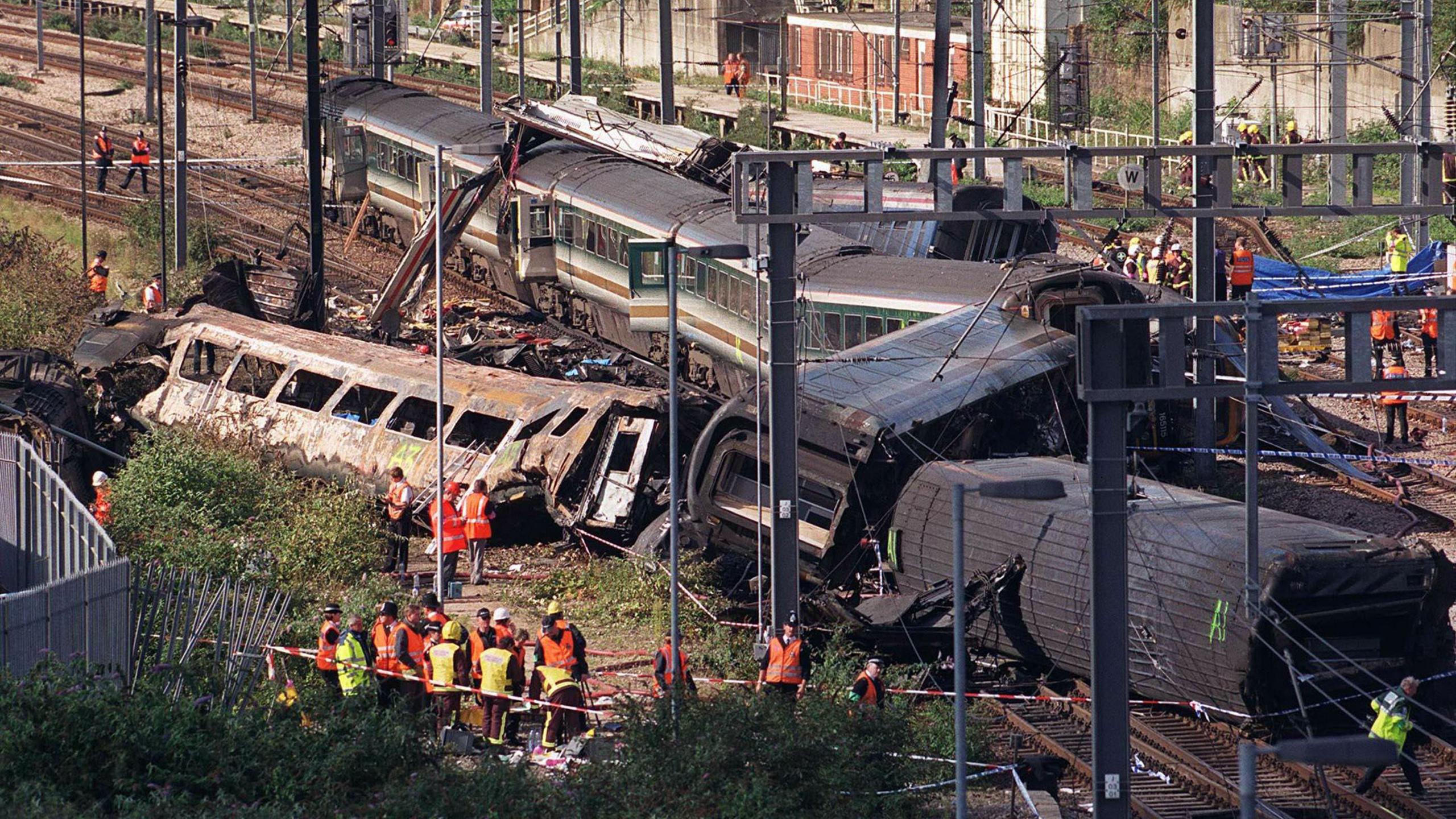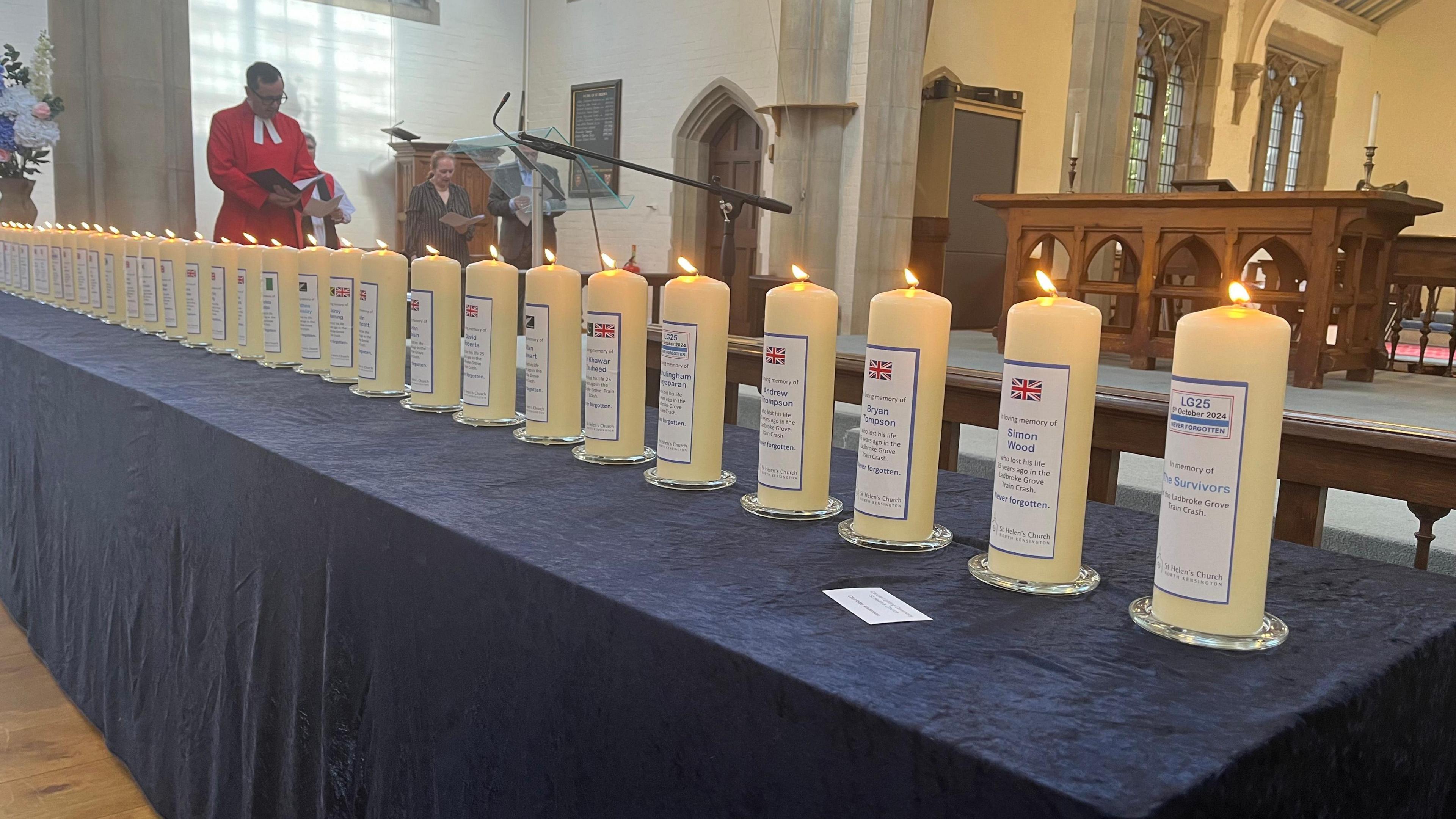Service marks Ladbroke Grove crash 25 years on

The disaster occurred at 08:08 when a three-car Thames Trains service collided with a high-speed First Great Western train at Ladbroke Grove Junction in 1999
- Published
Families bereaved by the Ladbroke Grove rail disaster have laid flowers at the memorial to honour those killed in west London 25 years ago - each remembered as "precious and loved".
Thirty-one people died and 417 were injured when a rush hour train collided almost head-on with a high speed train about two miles from Paddington station, shortly after 08:00 BST on 5 October 1999.
It was one of the worst rail crashes of the last century.
A wreath-laying ceremony took place in a memorial garden near the crash site on Saturday.

Candles were lit to mark 25 years since the Ladbroke Grove rail disaster
Tony Thomson, a retired British Transport Police superintendent who worked at the scene of the disaster, read out a message of condolence from King Charles III before the service began.
The event was led by the Rt Rev Dr Emma Ineson, Bishop of Kensington, who read each name etched on to the memorial before those gathered for a minute's silence.
She said: “Over these past 25 years lessons have been learnt that mean the events of Ladbroke Grove should - must - never be repeated again.
“For many, another needless tragedy that affected this community will also be in our hearts today - that of the Grenfell tower
“We are here to grieve together to offer comfort and to find hope.”
People were then invited to lay flowers and wreaths, with bereaved families asked first, followed by a wreath laid on behalf of the survivors, and then by representatives of the emergency services and railway industry.
The final wreath was laid by a representative from the Grenfell Tower Memorial Commission.
Lessons from Ladbroke Grove crash 25 years on
- Published4 October 2024
Paddington crash survivor fears safety 'slipping'
- Published5 October 2019
Rail crash remembered 15 years on
- Published5 October 2014
An inquiry into the disaster revealed the Thames service travelling from Paddington to Bedwyn in Wiltshire had gone through a red signal before crashing into the London-bound high speed First Great Western train.
Mark Phillips, chief executive of rail industry body the Rail Safety and Standards Board, said: "The rail industry experienced one of its darkest days at Ladbroke Grove 25 years ago.
"The legacy from this tragedy is that lessons learned, collaboration, hard work and modern technology have made Britain's railway one of the safest in the world.
"We remain vigilant and continually strive for further improvements. By working together, we can reduce the risk of a catastrophic train accident happening again.
"Our thoughts remain with the families and friends of those who died, those injured and those who survived and live with the memory."
Dangerous incidents of trains passing red signals have decreased since the introduction of safety improvements such as the train protection and warning system.
Office of Rail and Road figures show there were 287 signals passed at dangers - when a train passes a stop signal without permission - on Britain's railway in the year to the end of March, compared with 593 in 1999-2000.
Listen to the best of BBC Radio London on Sounds and follow BBC London on Facebook, external, X, external and Instagram, external. Send your story ideas to hello.bbclondon@bbc.co.uk, external